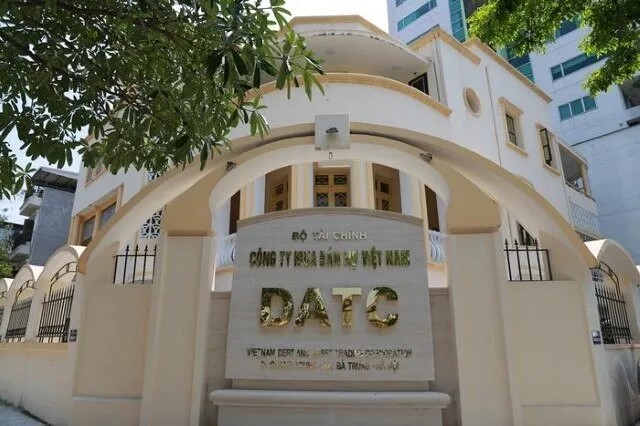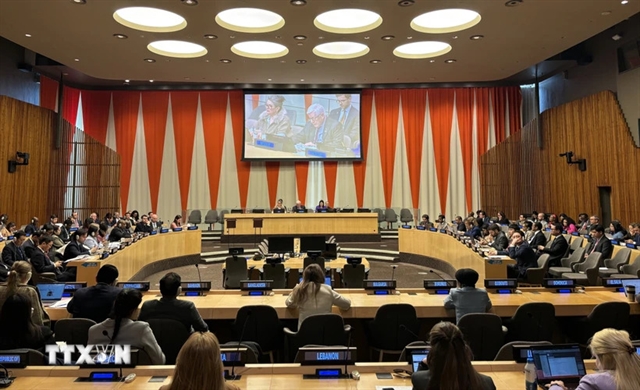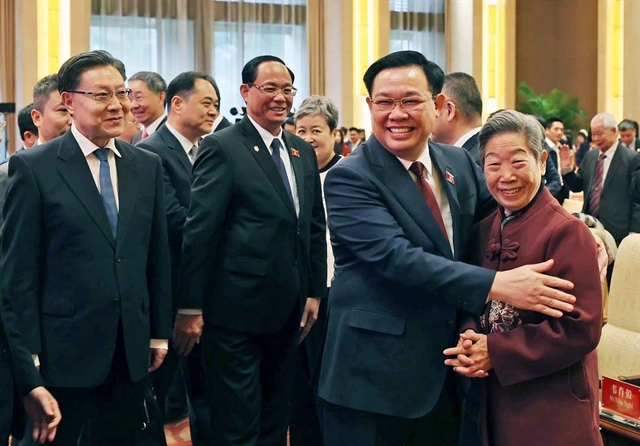 Society
Society

Human traffickers are getting more sophisticated – using high tech methods such as mobile phones and social media accounts to target young girls in remote mountainous areas leaving enforcements agencies with a mountain to climb to keep the girls safe.
 |
| A customs official gives out flyers about women trafficking to ethnic women in the northern province of Lào Cai. — Photo thanhnien.vn |
HÀ NỘI — Human traffickers are getting more sophisticated – using high tech methods such as mobile phones and social media accounts to target young girls in remote mountainous areas leaving enforcements agencies with a mountain to climb to keep the girls safe.
Colonel Tống Chính Phúc, head of the Lào Cai Province Border Guard’s Department of Drug and Crime Prevention and Control told Thanh Niên (Young People) newspaper that human traffickers targeted teen girls between 15-16 years old who were not well-educated and had limited social awareness or under disadvantaged circumstances.
They developed new techniques such as using mobile phones or social networks to approach the victims. As a result, victims were found in new areas such as Yên Bái, Hà Giang, Sơn La and Điện Biên and many were secondary and high school students, he said.
Châu Thị Dung (not her real name), 17, and Châu Thị Chinh (not her real name), 16, have shared their stories. The two girls lived in Chu Lìn Village in Lào Cai District’s Sa Pa Town. Chinh had a friend request from a boy named Sùng Seo Tráng in Mường Khương District on her mobile phone.
The boy offered to take Chinh to go to his house and get married. However, he took the two girls to the Chinese border area.
Chinh said they were bought by an old couple. They managed to escape and asked for help from local police. They were sent back to Việt Nam after three months.
Vừ Thị Sinh (not her real name), a student at Bát Xát 2 High School and a human trafficking victim, shared the same story with the same method.
Sinh was offered to go to a house in Mường Khương District. She and two other girls were transported to Chinese border. Sinh was sold to be a wife of a Chinese man, and got help from local police eight months later.
The other two girls were taken back to their homes after two months in China.
Phạm Hoàng, a teacher from the school, said they had encouraged the girls to continue studying. One of the girls was so ashamed after her ordeal, she decided to quit school.
Colonel Phúc said criminals no longer entice girls with promises of jobs, but pretend to be businessmen or even border guards to entice them.
Lý Thị Sừ (not her real name), a H’Mông ethnic minority girl in Điện Biên Province’s Mường Nhé District, said she was trafficked by her boyfriend who pretended to be a Thai doctor.
Another victim in Lai Châu Province’s Sìn Hồ District was in the same situation. Luckily, the girl’s parent suspected the man and asked for help from local border soldiers and she was rescued.
Lieutenant Colonel Hoàng Quốc Phong, head of Lào Cai Province’s Border Guard, said that the man was found to be in the trafficking ring in the province.
The man used a nickname to lure girls and earned between VNĐ3.5-7 million (US$154-308) for each case.
Figures from the Government’s Steering Committee for Crime Prevention and Control showed there were more than 2,700 human trafficking cases with roughly 6,000 victims between 2011 and 2017.
Of that, 450 cases were for marriage purposes and the rest were girls who were tricked into trafficking. More than 80 per cent of the trafficking occurred in border areas between Việt Nam and Cambodia, Laos and China.
Authorities also realised that education methods to help potential victims were not working.
Mùa A Đế, chairman of Xà Hồ Commune’s People’s Committee in Lào Cai Province, said they organised activities to educate local people about trafficking crime. However, it did not help much.
According to the committee, about 80 per cent of the households owned mobile phones. Criminals took advantaged of this device to approach girls instead of showing up at the commune and talking to the potential victims.
As a result, the commune had no effective preventive methods for such cases.
Nguyễn Tường Long, head of the provincial Sub-department of Social Evil Prevention and Control, said the traditional methods such as inviting local people to training sessions or distributing leaflets were not effective, especially for ethnic minorities.
Long said the sub-department has worked with schools to bring the education session on trafficking to students. Those who used to be the victims would have their talks at schools or markets to increase the effectiveness of the work.
Lê Đức Hiền, deputy director of the Ministry of Labour, Invalid and Social Affairs’ Social Evil Department, said under the regulations, victims would be supported to attend vocational training courses, given financial support of VNĐ1 million ($44) or have loans to set up their life.
However, Hiền admitted the procedures to prove themselves as victims were quite complicated as most returned without personal papers and had to wait for authorised agencies to chase culprits.
The ministry also guided localities to protect and support victims. Localities needed to study and build a mechanism to support victims to reintegrate into the society.
The ministry estimates the hotline 1800 1567 has received more than 10,000 calls since it came into operation in October, 2013. Of that, 232 calls were transferred to police forces and 92 victims were rescued. — VNS









